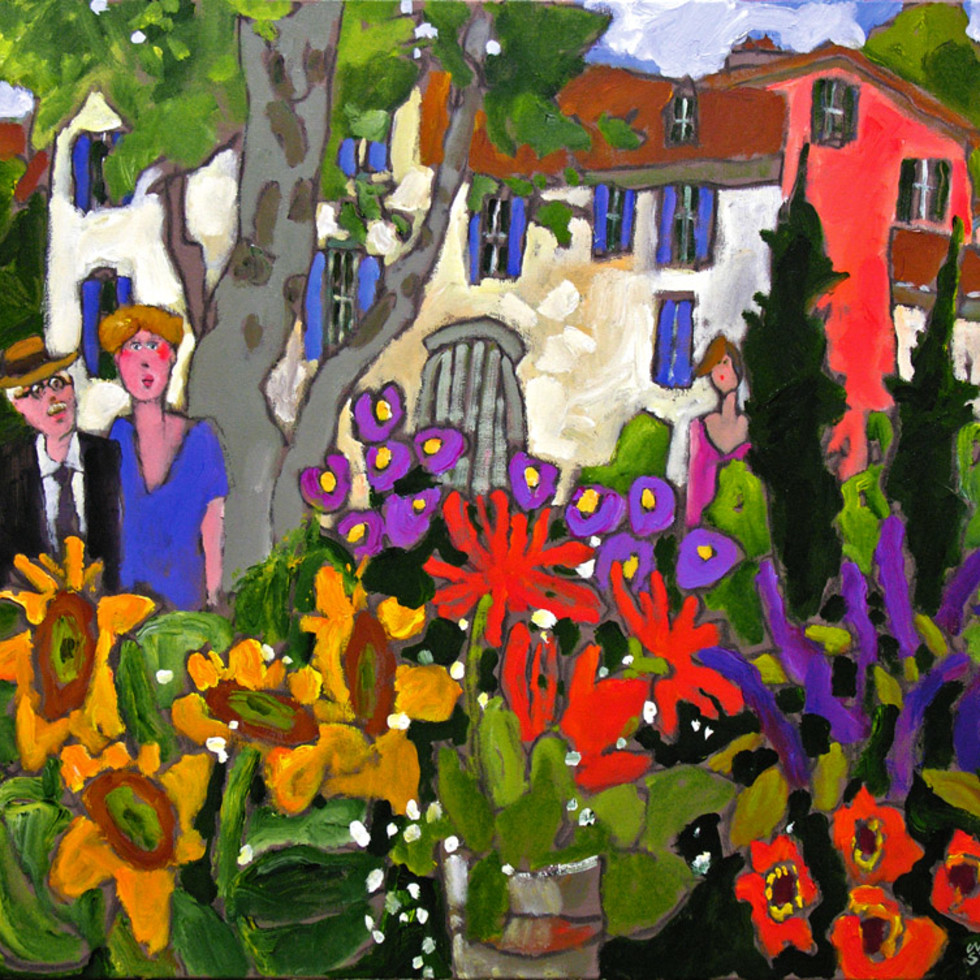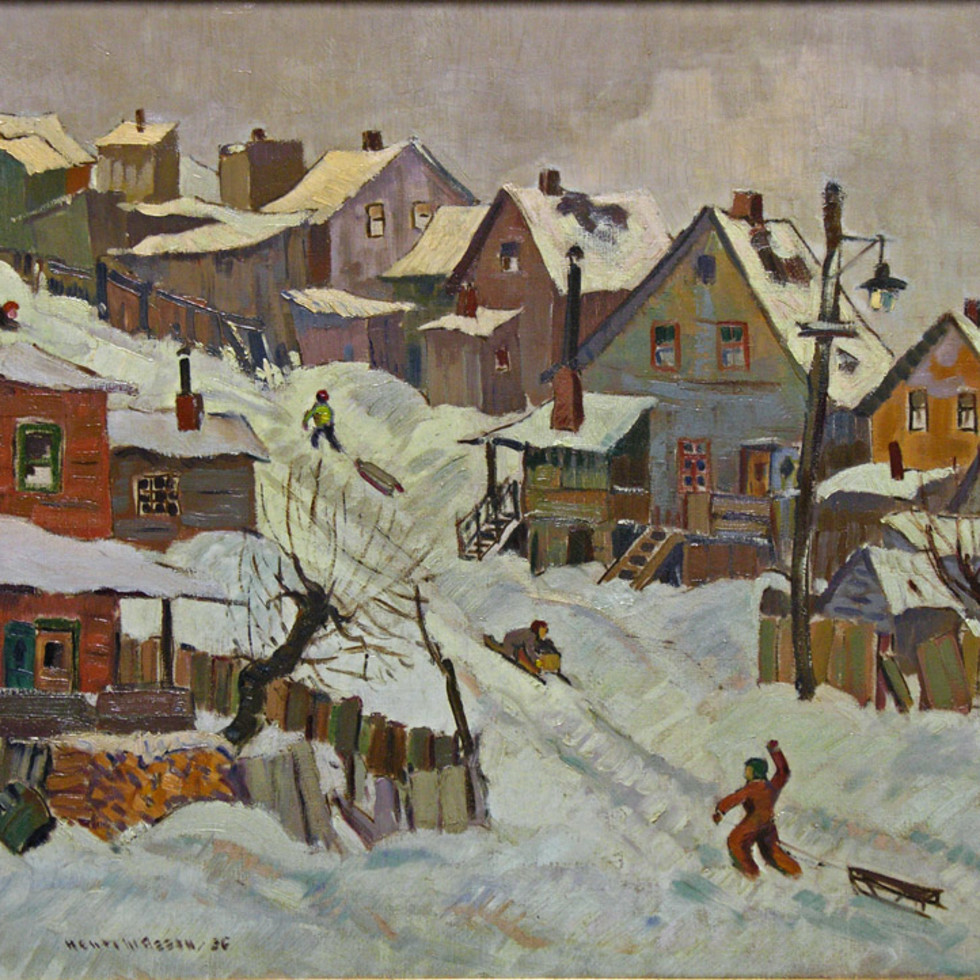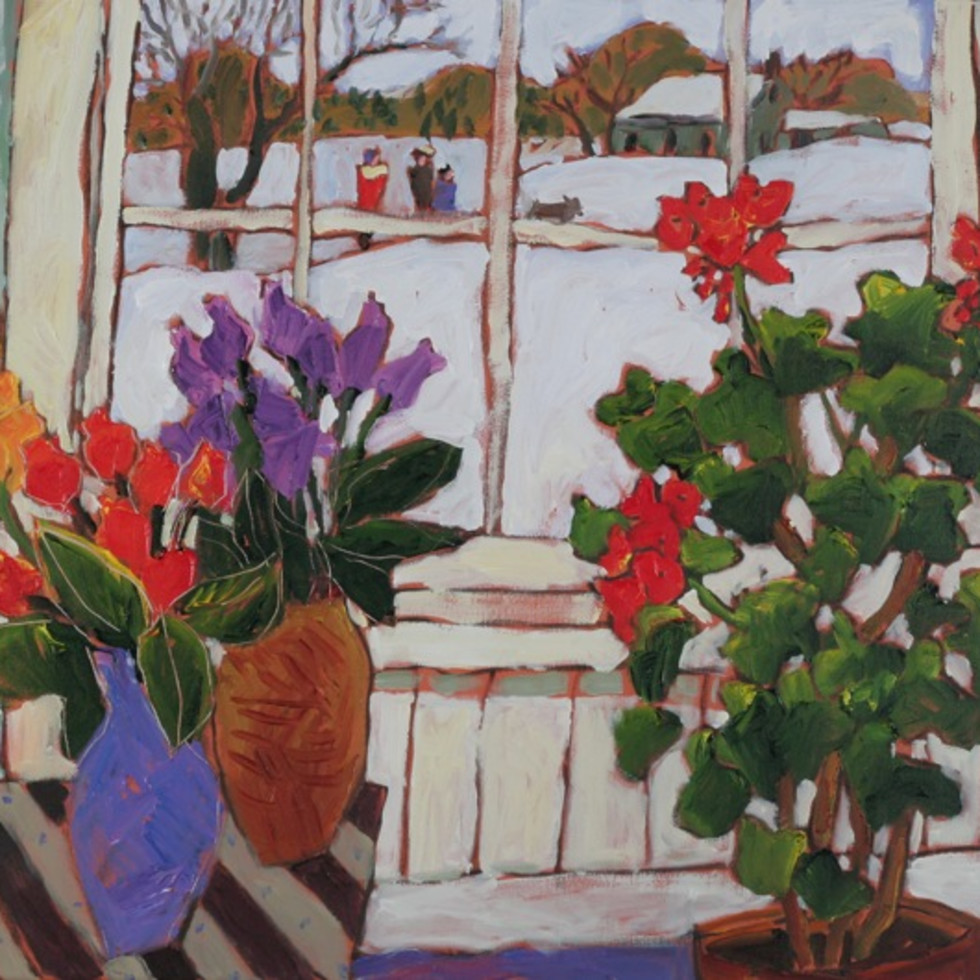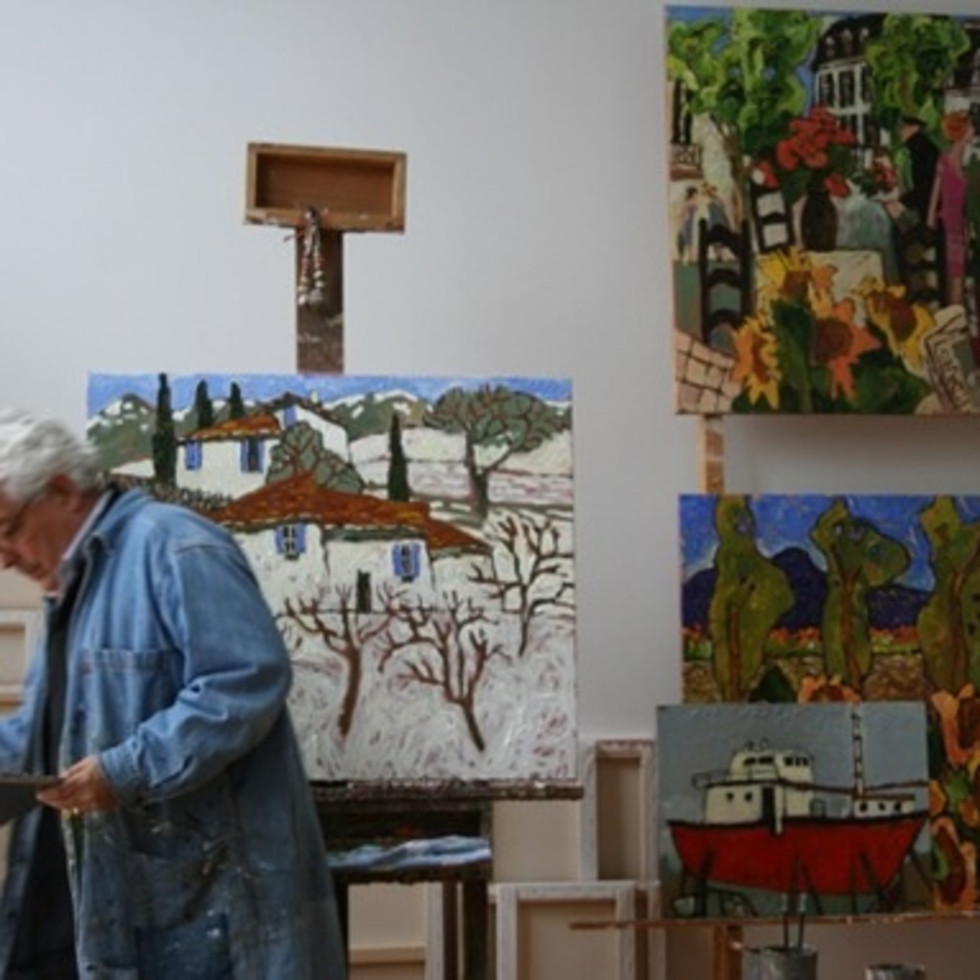Claude A. Simard
 "Simard's compositions reveal not only his love of all aspects of nature but also his deep commitment to preserving his natural environment"
"Simard's compositions reveal not only his love of all aspects of nature but also his deep commitment to preserving his natural environment"
Claude A. Simard was born in Quebec City on July 9, 1943 and died in 2014. He was a painter for over forty years. He also created numerous works of graphic design and, from 1974 to 2001, was a full professor at Laval University.
The first exhibition of his art was in 1974 at the Zannetin Gallery in Quebec City, where he showed paintings inspired by scenes of everyday life. In 1981, while travelling in Holland, he discovered the wealth of intensities of colour that characterized his later canvases. His sources of inspiration grew to include nature and his travels.
From his many trips to Italy and Provence, Simard returned with pictorial elements that, as an artist, situate him midway between Romanticism and Modernism. His compositions reveal not only his love of all aspects of nature but also his deep commitment to preserving his natural environment. From our Quebec winters, he took the theme of skating.
His work is known throughout Canada and abroad, and his paintings have exhibited in museums in Quebec City, Baie-Saint-Paul, Calgary, Edmonton, Toronto, Montreal, Vancouver and Victoria. In 1991, twenty of his canvases were shown in Paris at the Orangerie of the Château Bagatelle. The exhibition was recognized by UNESCO as an activity for its World Decade for Cultural Development.
Simard’s technique has attracted collectors around the world. His paintings can be found in the collections of important organizations such as Alcan, the Royal Bank of Canada, Bombardier Inc., Conféderation des CaissesDesjardins, Consolidated Bathurst, Gulf Canada Resources Ltd., Investors Group, Laurentian Bank, Rideau Hall, SNC-Lavalin, SSQ Mutual Life, Teleglobe Canada, the City of Québec, and the City of Hull. In 1982, Imperial Oil decorated the entrance hall of its head office in Montreal with an 18-foot by 45-inch mural by Simard entitled Aval et Amont (Downstream and Upstream).
As part of a large number of projects, Parks Canada asked Simard to give new life to our country’s history, notably by means of the five murals he created for Fort Chambly recounting the fort’s turbulent history from 1660 to 1760. These murals are particularly impressive not only because of their size but also because of their vibrant realism.
Canada Post also called on Simard to create nine stamps, commemorating Christmas of 1983 and then 1987 as well as a series in 1997 to commemorate “Québec en fleurs”.
Andrée Paradis, curator for the Quebec facet of the Suncor Crossroads Series, selected Claude A. Simard in 1984 to depict the crossroads of the Old Capital. This canvas, Carrefour de la Vieille Capitale, is now part of the collection of the City of Québec.
Claude A. Simard’s paintings have been reproduced many times − on the cover of Sélections Reader’s Digest (the sixth time in 1999), and for Hallmark greeting cards as part of a special collection of 48 cards, and by other publishing houses.
From 1975, Claude A. Simard produced sixty limited edition silkscreen printings.
In 1996, the City of Sainte-Foy, where Claude A. Simard lived, paid him a special tribute by purchasing a large number of his works for its newly built City Hall.
Over the years, Simard’s artistic techniques have been reviewed in articles in a number of publications and large daily newspapers. Using the artist’s personal journals as his inspiration André Juneau was the author of a book on the work of Claude A Simard in 1991 published by Université de Laval Press
Eight years later, in conjunction with with fine art galleries showing Claude’s paintings, Claude A. Simard published an illustrated volume of his works entitled Planting and Painting the Garden, in which he described how his paintings are inspired by his garden and by gardens elsewhere.
In 2011, he published another book, this time about the themes that touched and inspired him; the work was entitled Inspiration. Both volumes, Planting and Painting the Garden and Inspiration, were published in both English and French versions.
Claude A. Simard became a member of the Royal Canadian Academy of Arts in 1983 and a member of its board of directors from 1984 to 1987. In 1997, he was made an honorary lifetime member of the Cercle de la Garnison de Québec (Québec Garrison Club).
Claude A. Simard’s work celebrates nature as the main sources of inspiration of his art associated with his garden. His enthusiasm for gardening and nature led him to take part in founding the Association des Petits Jardins du Québec, which today has over 200 active members across the province. Simard’s own garden also received high praise in numerous specialized magazines and publications dealing with gardens and gardening.
Simard’s education as an artist was influenced by various schools of thought. He did his classical course at the Petit Séminaire and then studied at the Académie de Québec. As an art student at the Ontario College of Art in Toronto, Simard studied for four years under the tutelage of masters such as Arbuckle, Collier, Freifield and Schaefer, after which he returned to Quebec City.
In the summer of 1965, he did a three-month apprenticeship in the publication design branch at the British Motors Corporation in Birmingham, England.
In 1966, he began his career in plastic arts and graphic design when, as a young graphic artist, Simard went to work for Maison Simons in Québec. There, at Simon, inspired by modern European and American communication design theories, he developed a visual identity and graphic communications program, one which at the time was innovative branding. His original concept is still being used.
Later, from 1969 to 1971, he was able to observe applied aesthetic trends while on various trips to France, Switzerland, Germany and Denmark. In the spring of 1977, he was sent by Laval University as a delegate to the ICOGRADA Congress in Zurich, Switzerland, a convention bringing together graphic artists from a number of countries.
Shortly afterwards, he took part in founding the Société des Designers graphiques du Québec. He sat on its board of directors from 1974 to 1976 and, in this capacity, he drafted the province’s first professional code of ethics for the practice of graphic design.
While head of Communikart inc from 1973 to 1983 as a graphic artist, Claude A. Simard designed projects for large businesses and public agencies. He created the logo and the visual identity program for Donohue Forest Products, and designed a great number of publications for the Quebec Fine Arts Museum. He created teaching materials for the Quebec Ministry of Education and acted as a consultant in graphic aesthetics for such businesses as Rexfor and Roche Engineering .
As a professor at Laval University, Simard contributed to the educating of new graphic designers who work in graphic communication and applied design. He also trained a great number of young figurative painters who now represent to a great extent the next generation in this form of artistic expression in Canada. He was secretary and vice-dean of the visual arts faculty, and director of the “Ariane Création” research group, which planned and designed signage on the university campus.














